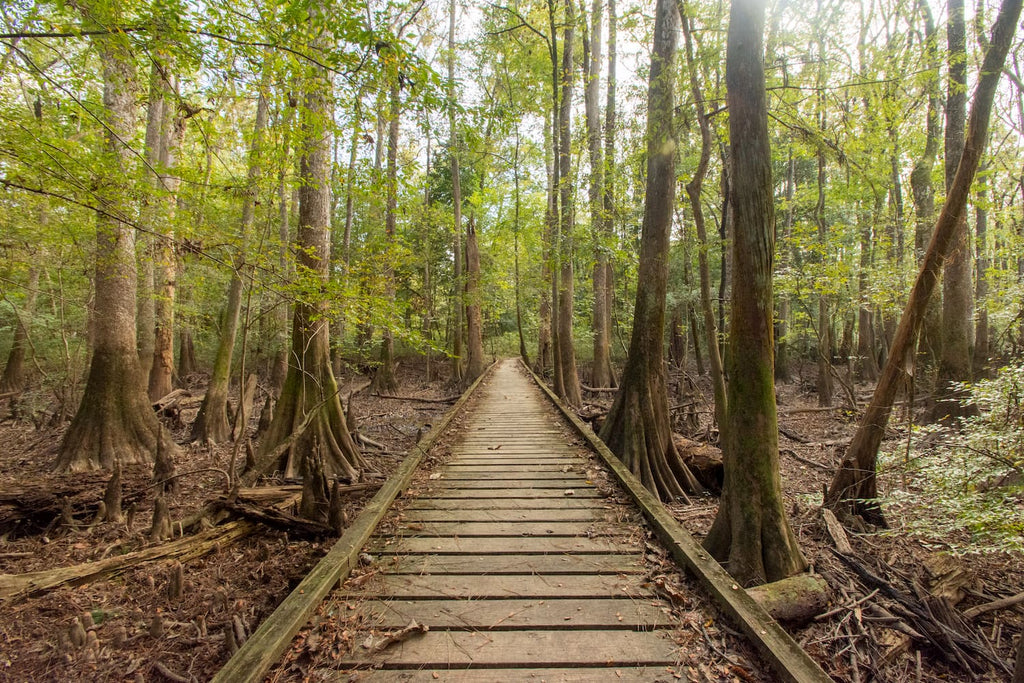Missing Summer Hiking? Check Out These 6 Awesome Winter Hikes
Hiking in winter is feasible with the right planning, good gear and a mild location. Whatever trail you decide to explore, don’t let the colder weather scare you off. Here are six fantastic winter hikes that won’t chill you to the bone.
1. Douglas Springs Trail (Tucson, AZ)

Arizona is a great choice for winter hiking. Tucson is famous for its saguaro cactus and wonderful Mexican food. On the far east side of town, at the end of the main road through town (Speedway Blvd) lies the fabulous moderate trail leading to Douglas Springs. Most hikers don’t make it the full six miles to the springs, but the beginning of the hike winds through saguaro and cholla cactus up a reasonable slope. At mile three, you’ll find Bridal Veil Falls—sometimes running after winter rains—where many choose to head back. The trail offers a view of Tucson fifteen miles to the west. Watch for horses on this trail.
Bonus hikes: this area is studded with several flatter trails that begin at the base of Douglas Springs.
2. Seven Hollows Trail (Petit Jean State Park, AR)

Arkansas is the “Natural State” and has plenty of wonderful hiking. Not far from Little Rock is the state’s oldest state park, where several boulder-studded trails make for excellent hiking year-round. Summer can be hot and dry but winter is perfect for trying the moderate five-mile Seven Hollows. This loop trail leads through canyons of skyscraper-sized boulders, with several dry springs along the way. About halfway is a detour to “the Grotto” area, where you’ll find a dry pool in winter. (In Spring, this hike can get too wet).
Bonus hikes: Petit Jean State Park offers many other trails covering similar terrain. Camping, yurts and cabins make this a great destination for winter hiking.
3. LaBarge Canyon (Phoenix, AZ)

Arizona is so great we’ve included it twice. If you find yourself craving a challenging hike with solitude, head over to Canyon Lake outside of Phoenix. Just across the paved road is the trailhead for LaBarge Canyon, an eight-mile out and back hike. You will cross a hill and dip down into a valley, then begin rock-hopping upstream through a small creek. In winter, the water is low and the temps are usually ideal. At the end, about four miles in, you’ll come to a cathedral-like canyon with no way forward. Give yourself at least five hours for this hike, as the creek makes it slow going.
Bonus hikes: the nearby Superstition Mountains are an excellent place to explore the Phoenix area in winter. The weather usually brings highs in the 60s and 70s.
4. Joshua Tree (Southern CA)

Not far from L.A. and Phoenix is a magical land called Joshua Tree National Park. The hiking here is sublime, weaving through rocks of every size. The area is known to attract rock climbers and winter hikers. The park has several campgrounds and plenty of trails to keep hikers of all levels happy. Although Joshua Tree is located in a remote area, it’s closeness to L.A. makes it a favored destination, which is why winter is the best time to go.
Fewer campers means more solitude in this natural paradise. Lost Palms Oasis trail is 7.2 miles in the open country. Most hikers need at least 3.5 hours to complete this out-and-back hike. At the end you will find a canyon with palm trees. On the way, it is a flat and scenic trek that is clearly marked. Be sure to bring water, even if temps are cooler.
Bonus: Joshua Tree has more than enough hikes to keep anyone busy and the campgrounds are wonderfully uncrowded in winter.
5. Big Bend National Park (Southwest Texas)

Big Bend is definitely off the beaten track. It’s one of the largest national parks in the US, but requires a four hour drive from the nearest big city (Austin) and a two hour drive from any city (Marathon, TX). More than 150 miles of trails explore the wide-open Chihuahuan desert, the Rio Grande River and the Chisos Mountains. Check out Chimneys Trail, at 4.8. miles, for a moderate hike with interesting rock formations. Another moderate trek is Dog Canyon, perfect for winter. Big Bend gets hot in summer, so winter is the perfect season to explore this Texas gem.
Bonus: Take a raft trip on the Rio Grande river and see the surprising variety of wildlife Big Bend has to offer.
6. Congaree National Park (South Carolina)

The southern states are often too hot and humid to enjoy in summer, but winter hikes here are ideal. In Congaree, you’ll find an overlooked national park that is home to the largest tract of old-growth forest in the nation. On its eight hiking trails, there is room for short mileage (1/3rd of a mile) or an all-day trek (12 miles). We recommend the Weston Lake Loop Trail, a moderate jaunt at 4.4 miles with wonderful creek views. Visitors sometimes spot otters at play. The area is home to the skeletons of cypress trees and dried river beds.
